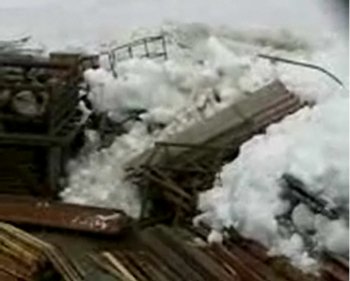Avinareta y los alarmistas
Nuestro lector habitual Avinareta nos manda esta noticia como contrapunto:
Puedes incluir esta aportacion de AVINARETA, en tu blog, como contrapunto de las opiniones generalmente emitidas por el blogero, Saludos AVINARETA
El Ártico, sin hielo dentro de 20 años.
Espero que mañana la comentemos con más calma, porque merece mucho la pena. Gracias, Avinareta. En todo caso ya el título tiene gracia, pensando que lo dicen unos tíos que llevan dos años seguidos anunciando una disminución del hielo, y equivocándose. Y peor, unos tíos que no son capaces de predecir lo que va a pasar con el hielo dentro de un mes, como acabamos de contar en:Hielo de Ártico: hagan apuestas (ya no)
No son capaces de predecir un mes, ni un año, ni dos. Pero les vamos a hacer caso a 20años. Flipo.En todo caso hoy quería ponerle un contrapunto al contrapunto de Avinareta. Y a las chorradas de Ban Ki-Moon. En forma de un vídeo sacado este 23 de junio, en una pequeña prospección petrolífera en el mar de Barents. Las propsecciones las ponen en sitios que creen a salvo del hielo. Pero a veces el hielo es más de lo que pensaban, y el viento monta la banquisa donde no se creía posible. Viene de WattsUpWithThat [–>] y está sacado por uno de sus participantes. Pinchar en la imagen para ver el vídeo. Y recordad: 23 de junio de este año.
–
